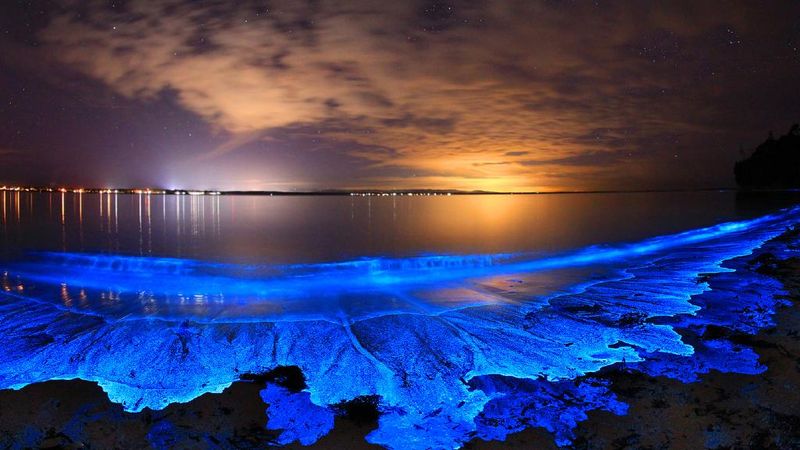Step into a realm where reality meets the extraordinary, where the natural world defies logic and astonishes the senses. From the enigmatic sailing stones of Death Valley to the ethereal glow of bioluminescent waves in the Maldives, our planet is adorned with natural wonders that captivate and perplex. These phenomena, ranging from Socotra’s Dragon’s Blood Trees to the surreal Eye of the Sahara in Mauritania, invite us to contemplate the mysteries of our Earth’s geological and biological tapestry. Join us on a journey through ten of the most intriguing and inexplicable marvels—each a testament to nature’s creativity, resilience, and enduring ability to inspire awe.
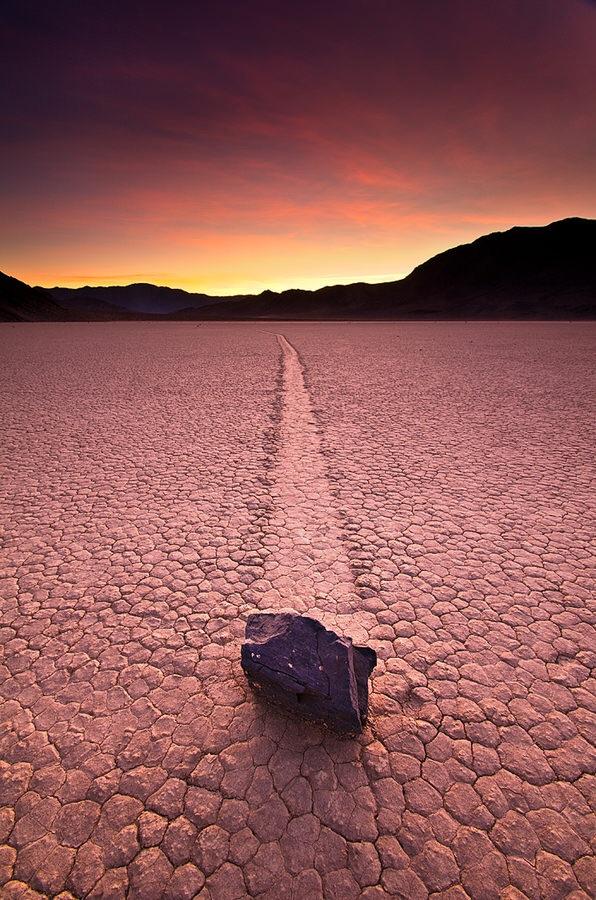
Sailing Stones of Death Valley, USA
In the barren expanses of Death Valley, USA, lies a geological enigma that has baffled scientists and intrigued visitors for generations—the Sailing Stones. These remarkable rocks, some weighing hundreds of pounds, seemingly defy gravity and glide across the desert floor, leaving long, sinuous trails etched into the dry earth behind them. The mystery of their movement remained unsolved for decades until recent scientific investigations revealed a rare combination of natural forces at play: during the rare occurrence of winter rains followed by freezing temperatures, thin sheets of ice form on the surface of the desert. When conditions are just right, these ice sheets, buoyed by the slightest slope and gentle winds, can push the rocks along their paths, leaving behind the distinctive tracks that have mystified observers. The phenomenon, witnessed primarily at the Racetrack Playa in Death Valley, continues to fascinate researchers who study Earth’s natural dynamics and the unexpected ways in which natural elements interact to create seemingly magical occurrences in one of the harshest environments on the planet.
Bioluminescent Waves, Vaadhoo Island
On the shores of Vaadhoo Island in the Maldives, nature unveils one of its most mesmerizing spectacles—the bioluminescent waves. Here, under the cloak of darkness and amidst the gentle lapping of the Indian Ocean, microscopic bioluminescent plankton known as dinoflagellates transform the waters into a radiant display of blue luminescence. When disturbed, these tiny organisms emit a soft, ethereal glow, creating a surreal scene where the waves appear to shimmer and sparkle with an otherworldly light. This natural light show, often referred to as the “sea of stars,” casts an enchanting ambiance along the coastline, captivating visitors who flock to witness this rare and transient phenomenon. The bioluminescent waves of Vaadhoo Island not only highlight the intricate beauty of marine life but also remind us of the hidden wonders that thrive beneath the surface of our oceans, offering a glimpse into the magical and mysterious realms of our planet’s natural world.
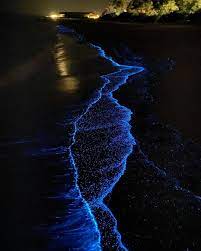
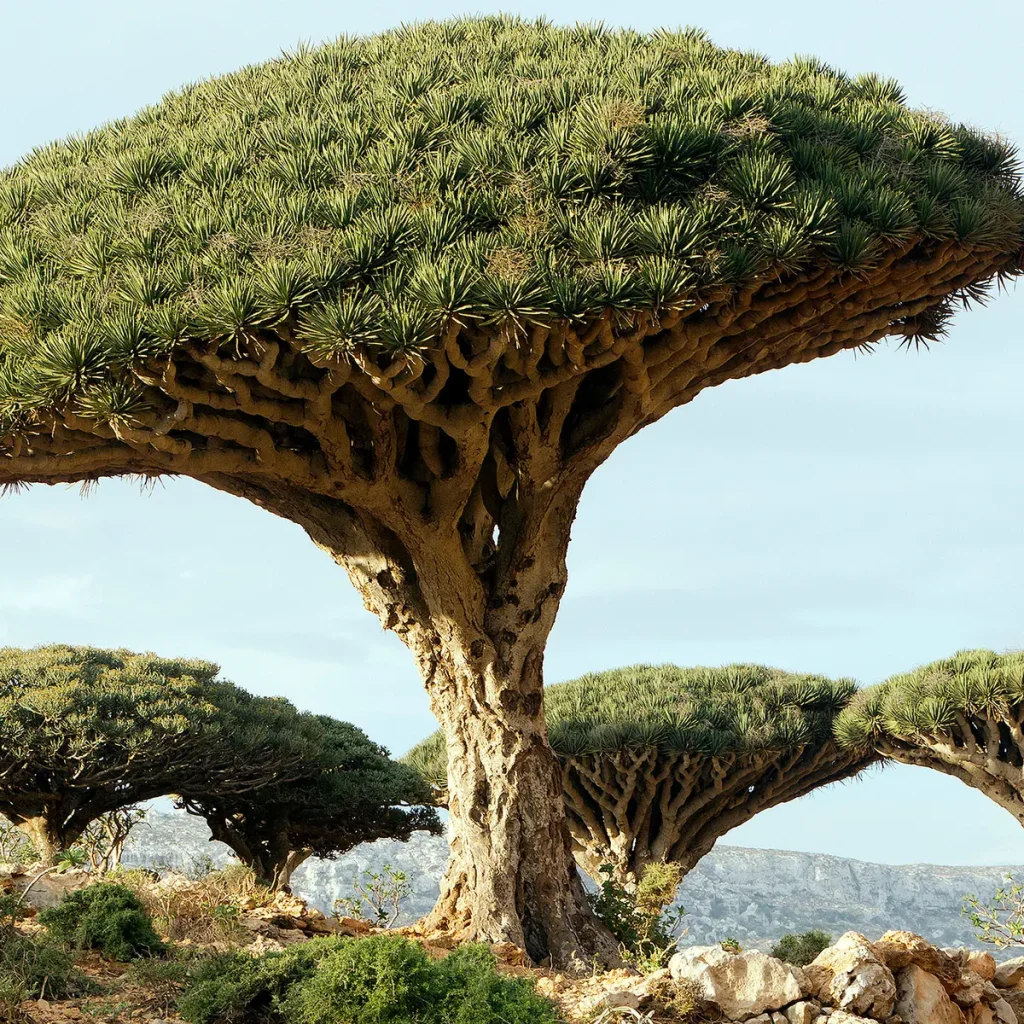
Socotra Dragon’s Blood Trees
Perched in the isolated and remote landscape of Socotra Island in Yemen, the Dragon’s Blood Trees (Dracaena cinnabari) stand as a striking symbol of nature’s eccentricity and resilience. These ancient, umbrella-shaped trees, with their densely packed crowns resembling giant mushrooms, create an almost alien-like forest on the island. Their name, “Dragon’s Blood,” originates from the dark red sap that these trees produce, which has been valued for its medicinal properties, dyes, and even as a varnish since ancient times. The Dragon’s Blood Trees are a remnant of a prehistoric world, thriving in an ecosystem that has evolved in isolation over millions of years. This isolation has given rise to a unique flora and fauna found nowhere else on Earth. The island’s harsh, arid climate and rocky terrain have sculpted these trees into their unusual forms, adapted to capture moisture from the air through their broad, dense canopies. Their existence highlights the incredible adaptability of life and the extraordinary biodiversity that can develop in isolation. As a result, Socotra’s Dragon’s Blood Trees are not only a natural wonder but also a living laboratory for studying evolution, adaptation, and the enduring power of nature to thrive against the odds.
Eye of the Sahara (Richat Structure), Mauritania
In the vast, desolate expanse of the Sahara Desert in Mauritania lies a geological wonder that has fascinated scientists and intrigued observers for decades—the Eye of the Sahara, also known as the Richat Structure. This remarkable formation, visible from space, resembles a colossal bull’s-eye with concentric rings spanning approximately 50 kilometers (31 miles) in diameter. Initially believed to be an impact crater from an asteroid, further studies have revealed that it is a highly eroded geological dome. The structure’s unique circular pattern is the result of differential erosion of various rock layers, exposing bands of sedimentary rock that have weathered at different rates. This erosion process, combined with the geological uplift and the presence of igneous rocks, has created a spectacular multi-ringed formation that stands out dramatically against the barren desert landscape. The Eye of the Sahara’s origins date back hundreds of millions of years to a time when the region was part of a supercontinent.
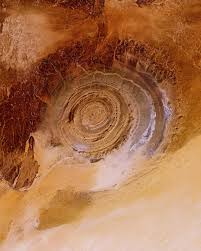
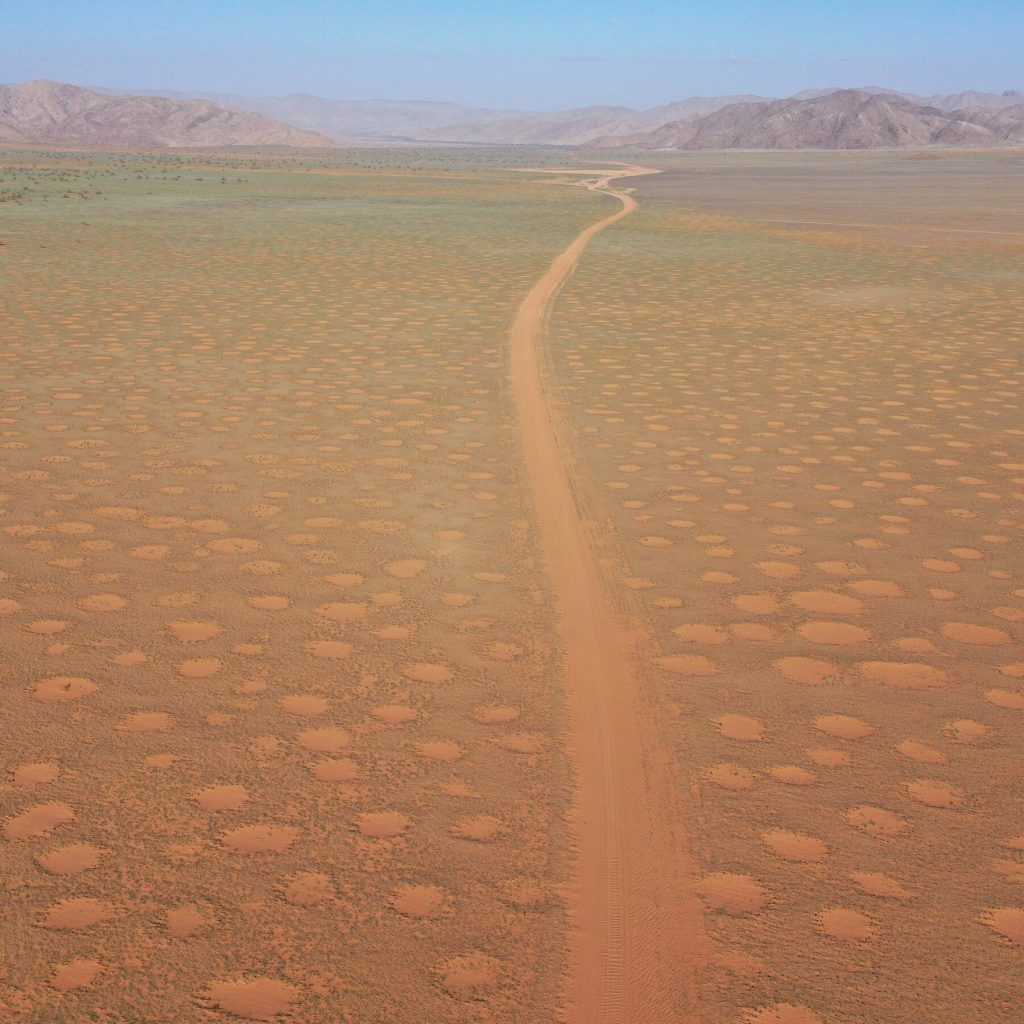
Fairy Circles, Namib Desert
In the arid expanse of the Namib Desert, a mysterious natural phenomenon known as Fairy Circles captivates scientists and visitors alike. These perfectly round patches of barren land, ranging from a few feet to over 20 meters in diameter, are surrounded by rings of lush grass, creating a striking contrast against the otherwise desolate landscape. Found predominantly in Namibia and parts of Angola, Fairy Circles have spurred numerous theories regarding their origin. Some researchers suggest they result from subterranean termite activity, where termites consume the roots of vegetation, preventing plant growth within the circle. Others propose that the circles are a self-organizing pattern formed by plants competing for scarce water resources in the arid environment, a theory supported by mathematical models. Despite extensive studies, the exact cause of Fairy Circles remains a subject of debate, adding to their enigmatic allure. These circles appear to be relatively stable, persisting for decades, and new ones forming as old ones fade, indicating a dynamic balance in the desert ecosystem. The Namib Desert’s Fairy Circles not only offer a glimpse into the complex interactions within one of the world’s oldest deserts but also highlight nature’s ability to create orderly patterns amidst apparent chaos.

Underwater Crop Circles, Japan
Beneath the serene waters off the coast of Japan, a stunning and intricate natural phenomenon occurs that has come to be known as the underwater crop circles. These mesmerizing circular patterns, up to seven feet in diameter, are meticulously crafted by male pufferfish. The discovery of these formations initially baffled scientists and divers alike, but it was soon revealed that these artistic designs serve a crucial purpose in the pufferfish’s reproductive cycle. Using their fins, the male pufferfish laboriously carves out these complex geometric patterns in the sandy seabed over the course of days or even weeks. The central ridges and valleys of the circle are meticulously sculpted to maximize the flow of water and, subsequently, the oxygen levels around the eggs. This careful construction not only attracts female pufferfish but also ensures that the eggs laid within the center of these circles have a higher chance of survival. The precise and artistic nature of these underwater crop circles has fascinated marine biologists and inspired a deeper appreciation for the ingenuity found in marine life. These underwater artworks, driven by natural instinct and the need for species propagation, showcase the remarkable and often unseen behaviors that occur in the depths of our oceans, highlighting the pufferfish’s unique role in the aquatic ecosystem.
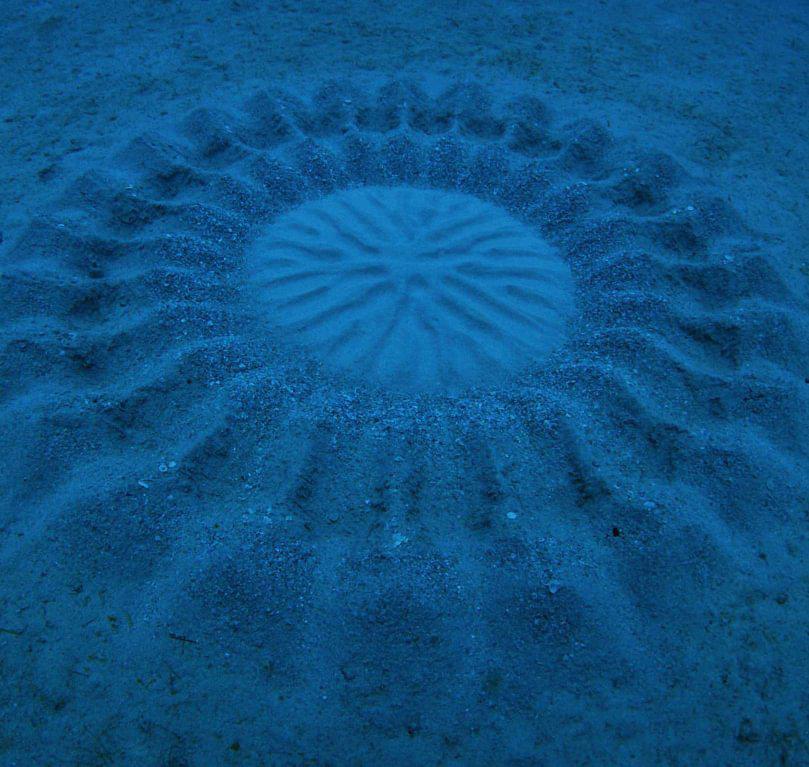
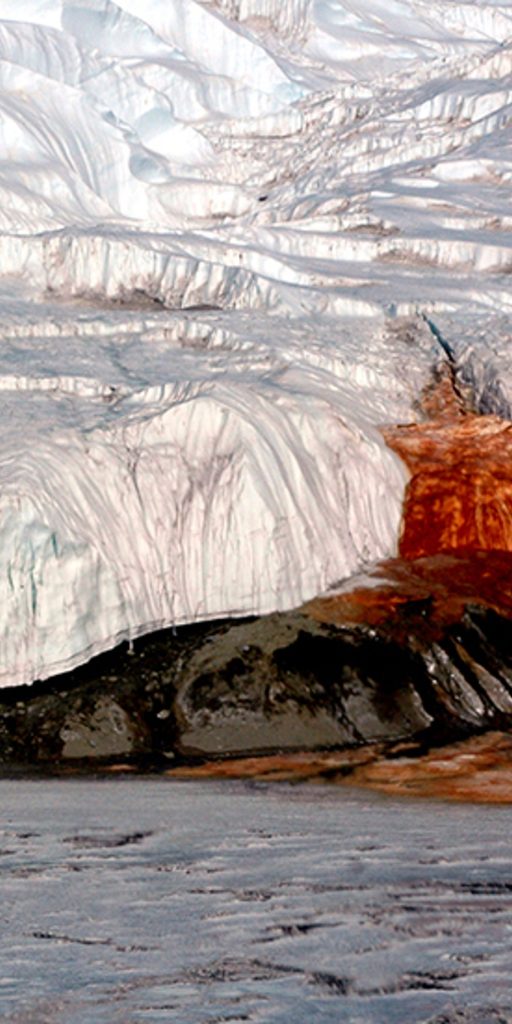
Blood Falls, Antarctica
Nestled in the stark, icy landscape of Antarctica, Blood Falls is a dramatic and eerie natural phenomenon that has captured the curiosity of scientists and adventurers alike. This striking feature, located in the McMurdo Dry Valleys, flows out from the Taylor Glacier and appears as a vivid red waterfall starkly contrasting against the pristine white ice. The mystery of Blood Falls begins with its unusual coloration, which is due to iron-rich brine that oxidizes when it comes into contact with the air, much like how iron rusts. This iron-laden water originates from a subglacial lake that has been isolated from the outside world for millions of years. The subglacial environment is a unique microbial ecosystem, thriving in complete darkness and extreme cold, with microorganisms that survive by metabolizing the iron and sulfate in the water. These microbes have adapted to life in such an extreme environment, providing valuable insights into the possibilities of life in similar extreme conditions elsewhere in the solar system. The study of Blood Falls not only sheds light on the geological and biological processes at work in one of Earth’s most remote and inhospitable regions but also enhances our understanding of microbial life and its resilience. This natural wonder stands as a testament to the unexpected and often hidden wonders of our planet, revealing the complex and fascinating interplay between geology, chemistry, and biology in the coldest place on Earth.
Fly Geyser, Nevada
Fly Geyser, located in the remote Black Rock Desert of Nevada, is a stunning and surreal geothermal feature that has transformed from an accidental creation into one of nature’s most vibrant spectacles. Originally formed in 1964 when a geothermal energy company drilled a well at the site, the well was improperly capped, allowing geothermally heated water to continuously escape. Over the decades, this mineral-rich water, primarily composed of calcium carbonate, has built up into a series of striking, colorful terraces and cones that rise about five feet above the desert floor. The geyser’s vivid hues of red, green, and yellow are due to the thermophilic algae that thrive in the hot, moist environment created by the geyser’s continuous spouting. These colors, combined with the intricate formations, give Fly Geyser an otherworldly appearance, making it a photographer’s dream. The geyser is located on private land, which has helped preserve its delicate and unique environment. Efforts by conservation groups, such as the Burning Man Project, which now owns the land, aim to protect and manage this natural wonder responsibly, balancing public access with environmental stewardship. Fly Geyser serves as a reminder of how human intervention can unintentionally create new natural wonders, adding a layer of complexity and beauty to the already diverse landscape of the Black Rock Desert. This geothermal marvel continues to evolve, shaped by the forces of nature and time, captivating all who have the chance to witness its vibrant splendor.
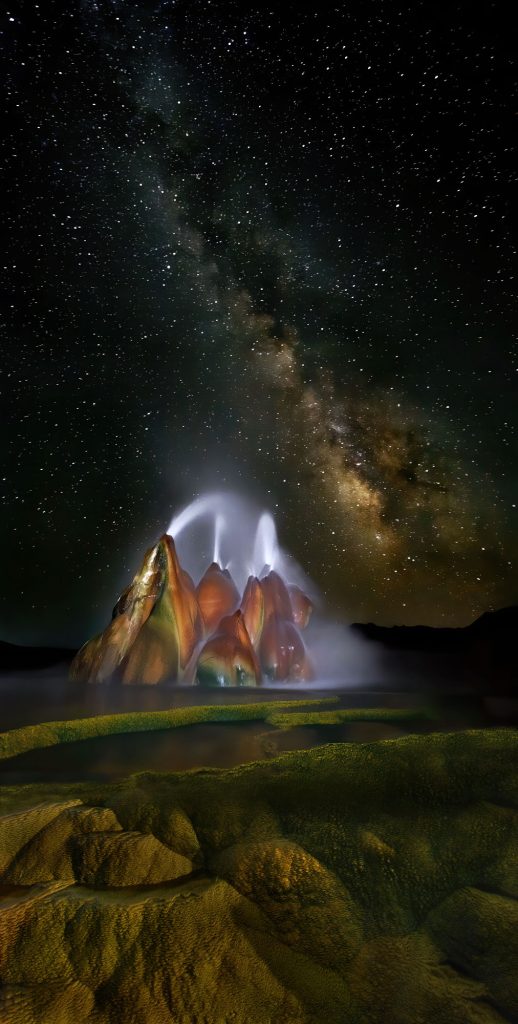
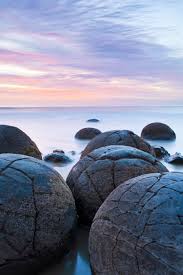
Moeraki Boulders, New Zealand
The Moeraki Boulders, strewn along Koekohe Beach on New Zealand’s South Island, are a geological marvel that captivates with their almost perfectly spherical shapes and significant size, some reaching up to three meters in diameter. Formed over 60 million years ago during the Paleocene epoch, these boulders originated from the gradual accumulation of calcium and other minerals around a central core, a process known as concretion. As coastal erosion wore away the surrounding mudstone cliffs, the boulders were gradually exposed and deposited along the beach. Their surfaces feature intricate septaria, or cracks filled with calcite, adding to their mystique. Maori legend adds a cultural layer to their allure, describing the boulders as remnants of ancient eel baskets and calabashes from a legendary canoe wreck. The Moeraki Boulders draw geologists, scientists, and tourists alike, all eager to witness their unique formation and stunning appearance, particularly during the striking light of sunrise and sunset. These natural wonders stand as a testament to the slow, persistent geological processes that shape our planet and continue to inspire awe and curiosity.
Danakil Depression, Ethiopia
The Danakil Depression in Ethiopia is a surreal and extreme landscape that ranks among the hottest and most inhospitable places on Earth. Located at the junction of three tectonic plates in the Horn of Africa, this geological marvel is characterized by its vast salt flats, volcanic cones, and brightly colored hot springs. The depression lies below sea level and is part of the East African Rift system, where tectonic activity has created a diverse and dramatic terrain. One of its most iconic features is the Dallol Volcano, known for its otherworldly landscape of hydrothermal fields, acid lakes, and chimneys belching sulfur and other minerals. The Danakil Depression’s extreme conditions, with temperatures often exceeding 50°C (122°F) and virtually no rainfall for much of the year, pose severe challenges to life. Yet, it hosts unique extremophile microorganisms that thrive in the harsh, saline environments. The region’s salt flats, particularly around Lake Assal and the Afar Triangle, have been mined for centuries, contributing to the area’s economic and cultural significance. The vibrant colors of the hot springs, caused by mineral deposits and microbial activity, contrast starkly with the desolate surroundings, creating a surreal and breathtaking landscape that continues to intrigue scientists, adventurers, and visitors drawn to its otherworldly beauty and geological significance.
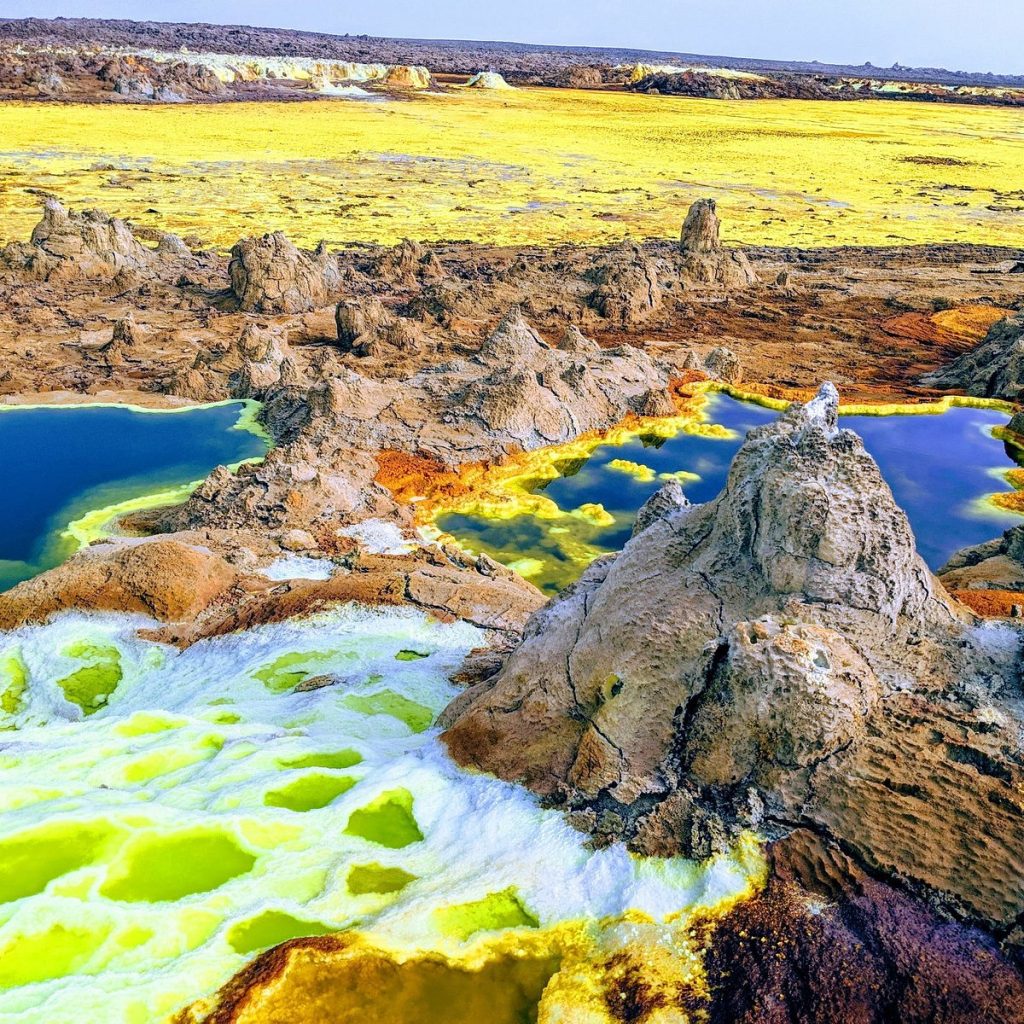
Conclusion
In conclusion, these ten natural wonders—from the mysterious sailing stones of Death Valley to the vibrant Fly Geyser of Nevada, and from the bioluminescent waves of Vaadhoo Island to the surreal Moeraki Boulders of New Zealand—reveal the extraordinary diversity and complexity of our planet’s landscapes. Each phenomenon tells a story of geological forces, biological adaptations, and the intricate interplay of natural elements over millions of years. They inspire wonder, provoke curiosity, and remind us of the Earth’s resilience and capacity for beauty in even the most extreme environments. As we continue to explore and understand these marvels, we deepen our appreciation for the dynamic and ever-changing nature of our world, encouraging us to cherish and protect its natural wonders for future generations to marvel at and study.








